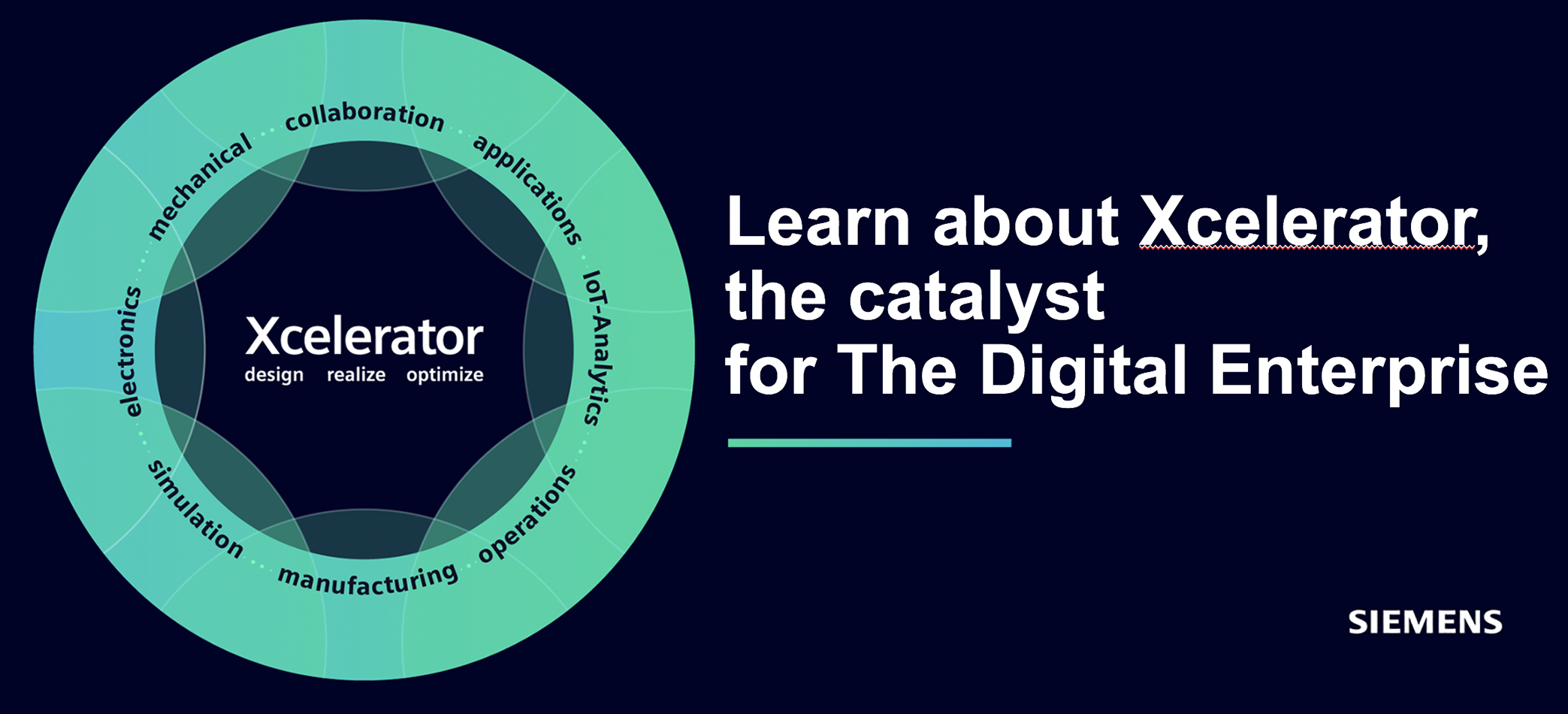Siemens $5.1 Billion Bet on Buying Dotmatics: ”Scaling Up PLM on a Market With...
“MAKING COMPETITION much TOUGHER for Dassault and Aras in Life Sciences.”
For the second time in six months, Siemens announced this week a new giant acquisition with strong connections to PLM: The company is buying the American developer of R&D software in medicine, chemistry, bio sciences and materials technology, Dotmatics, for $5.1 billion. The acquisition signals a major investment in expanding Siemens' already strong position in the PLM area and related R&D in a number of heavy industrial segments such as automotive, aerospace and defense, electronics, and the like, towards the commercially gigantic Life Sciences area.
The investments over the past six months indicate a market offensive of major proportions: This purchase alone and the investment in Altair (AI, HPC and Simulation & Analysis) has cost $15.7 billion.
In the press material about the Dotmatics acquisition, Siemens CEO Roland Busch stated that Life Sciences offers an attractive complementary opportunity in the software market and pointed out that it expands Siemens' total addressable market for industrial software by $11 billion. This potential has already been exploited by Siemens' toughest competitor in the PLM arena, Dassault Systemes in particular, but also by Aras PLM, however Roland Busch, PLM chief Tony Hemmelgarn and the coworkers in the PLM division are seriously going after the great commercial opportunities that lie within the sector.
"The acquisition strengthens our strategic position in Life Sciences and creates a world-leading AI-driven PLM software portfolio, this as part of Siemens Xcelerator. AI has emerged as a transformative force in various industries, and its application in Life Sciences is becoming increasingly important," says Busch.
And of course, the R&D area and what AI can do in terms of medicine and life sciences is very attractive, but it is perhaps just as interesting that the pharmaceutical manufacturing linked to R&D work is currently actually considered by analysts to be a bit neglected compared to what has happened in, for example, automotive, electronics and similar segments where Siemens, Altair included, is one of the market dominants in terms of PLM, AI and automation. The players in pharmaceutical development – those who have succeeded – have earned so much money that they have often become stuck in a kind of mild passivity when it comes to investments in efficient manufacturing. They have continued to work in their more transaction-based and expensive ERP environments; the big money has come in anyway, without having to think about what has been considered marginal parts, such as sharpening the production equipment. But pharmaceutical development is incredibly complex, with many phases that often drag on for decades before you have an approved preparation. But then the whole thing has to be scaled up, in many cases globally. In this sequence, there is a great commercial potential for players who are sitting on cutting-edge technology and holistically connected software portfolios, such as Xcelerator. How so? A recent survey conducted by AMR Research showed that 31% of manufacturers in the life sciences industry are already using PLM software to accelerate innovation and to design products. Even more promising from Siemens' point of view, however, is that 55% are now evaluating PLM software.
Click on the link to read more on PLM&ERP News.
The investments over the past six months indicate a market offensive of major proportions: This purchase alone and the investment in Altair (AI, HPC and Simulation & Analysis) has cost $15.7 billion.
In the press material about the Dotmatics acquisition, Siemens CEO Roland Busch stated that Life Sciences offers an attractive complementary opportunity in the software market and pointed out that it expands Siemens' total addressable market for industrial software by $11 billion. This potential has already been exploited by Siemens' toughest competitor in the PLM arena, Dassault Systemes in particular, but also by Aras PLM, however Roland Busch, PLM chief Tony Hemmelgarn and the coworkers in the PLM division are seriously going after the great commercial opportunities that lie within the sector.
"The acquisition strengthens our strategic position in Life Sciences and creates a world-leading AI-driven PLM software portfolio, this as part of Siemens Xcelerator. AI has emerged as a transformative force in various industries, and its application in Life Sciences is becoming increasingly important," says Busch.
And of course, the R&D area and what AI can do in terms of medicine and life sciences is very attractive, but it is perhaps just as interesting that the pharmaceutical manufacturing linked to R&D work is currently actually considered by analysts to be a bit neglected compared to what has happened in, for example, automotive, electronics and similar segments where Siemens, Altair included, is one of the market dominants in terms of PLM, AI and automation. The players in pharmaceutical development – those who have succeeded – have earned so much money that they have often become stuck in a kind of mild passivity when it comes to investments in efficient manufacturing. They have continued to work in their more transaction-based and expensive ERP environments; the big money has come in anyway, without having to think about what has been considered marginal parts, such as sharpening the production equipment. But pharmaceutical development is incredibly complex, with many phases that often drag on for decades before you have an approved preparation. But then the whole thing has to be scaled up, in many cases globally. In this sequence, there is a great commercial potential for players who are sitting on cutting-edge technology and holistically connected software portfolios, such as Xcelerator. How so? A recent survey conducted by AMR Research showed that 31% of manufacturers in the life sciences industry are already using PLM software to accelerate innovation and to design products. Even more promising from Siemens' point of view, however, is that 55% are now evaluating PLM software.
Click on the link to read more on PLM&ERP News.
ABB’s New Generative AI, Industrial Knowledge Vault:“Like A Bridge Over Troubled Water”
ABB and MICROSOFT develop GENERATIVE AI solution that ensures operational continuity when key employees retire or leave.
Generative AI to transform how information is preserved and shared, thus enabling smarter, faster and more sustainable decision-making – could this be a solution to a not-so-uncommon industrial problem? ABB’s experts, together with Microsoft, have thought and acted on the matter and created a solution, Ability Industrial Knowledge Vault, that addresses a growing challenge in many industrial environments: knowledge loss. Why is this so interesting?
For several reasons, not least in the perspective that when experienced employees retire or leave, the loss of decades of collective knowledge threatens operational continuity, efficiency and innovation if not addressed properly. Traditional documentation methods are often fragmented, requiring significant manual effort to compile, interpret and apply. In this, ABB’s new Ability family solution can act as, “a bridge over murky waters.”
“Industries everywhere are facing a critical knowledge gap as a generation of experienced workers retire, taking their invaluable expertise with them,” says ABB’s Sanjit Shewale, Global Head of Digital, Process Industries. “Our Industrial Knowledge Vault addresses this challenge head-on by providing a secure and accessible platform to enable businesses to do more digitally. By capturing, preserving, and sharing this critical knowledge, companies can ensure business continuity and provide workforces with timely information to do their jobs smarter, faster, and more sustainably.”
Powered by Microsoft Azure OpenAI Service, this Ability family’s Industrial Knowledge Vault can store, retain, and protect critical expertise while actively transforming that knowledge into step-by-step workflows. This enables workers to quickly access and apply best practices, enabling businesses to run more smoothly while maintaining secure operations.
The solution captures and structures expertise in a centralized, secure repository, easily accessible through natural language conversations, enabling engineers and operators to perform tasks more efficiently. To that end, Industrial Knowledge Vault uses ABB Genix CoPilot and Microsoft Azure OpenAI Service to analyze and synthesize information into actionable procedures, allowing workers to effortlessly retrieve insights through an intuitive, conversational interface.
Click on the headline to read more on PLM&ERP News.
Generative AI to transform how information is preserved and shared, thus enabling smarter, faster and more sustainable decision-making – could this be a solution to a not-so-uncommon industrial problem? ABB’s experts, together with Microsoft, have thought and acted on the matter and created a solution, Ability Industrial Knowledge Vault, that addresses a growing challenge in many industrial environments: knowledge loss. Why is this so interesting?
For several reasons, not least in the perspective that when experienced employees retire or leave, the loss of decades of collective knowledge threatens operational continuity, efficiency and innovation if not addressed properly. Traditional documentation methods are often fragmented, requiring significant manual effort to compile, interpret and apply. In this, ABB’s new Ability family solution can act as, “a bridge over murky waters.”
“Industries everywhere are facing a critical knowledge gap as a generation of experienced workers retire, taking their invaluable expertise with them,” says ABB’s Sanjit Shewale, Global Head of Digital, Process Industries. “Our Industrial Knowledge Vault addresses this challenge head-on by providing a secure and accessible platform to enable businesses to do more digitally. By capturing, preserving, and sharing this critical knowledge, companies can ensure business continuity and provide workforces with timely information to do their jobs smarter, faster, and more sustainably.”
Powered by Microsoft Azure OpenAI Service, this Ability family’s Industrial Knowledge Vault can store, retain, and protect critical expertise while actively transforming that knowledge into step-by-step workflows. This enables workers to quickly access and apply best practices, enabling businesses to run more smoothly while maintaining secure operations.
The solution captures and structures expertise in a centralized, secure repository, easily accessible through natural language conversations, enabling engineers and operators to perform tasks more efficiently. To that end, Industrial Knowledge Vault uses ABB Genix CoPilot and Microsoft Azure OpenAI Service to analyze and synthesize information into actionable procedures, allowing workers to effortlessly retrieve insights through an intuitive, conversational interface.
Click on the headline to read more on PLM&ERP News.
ABBs nya generativa AI, Industrial Knowledge Vault: “Like A Bridge Over Troubled Water”
ABB och MICROSOFT tar fram GENERATIV AI-lösning som säkerställer operativ driftskontinuitet när nyckelmedarbetare slutar eller går i pension. Generativ AI för att transformera hur information bevaras och delas, för att på så vis möjliggöra smartare, snabbare och mer hållbart beslutsfattande – kan det vara något? Verkstadskoncernen ABBs experter har tillsammans med Microsoft funderat och agerat på saken och skapat en lösning, Ability Industrial Knowledge Vault, som tar itu med en växande utmaning i många industriella miljöer: kunskapsförlust. Varför är detta så intressant?
Av flera skäl, inte minst i perspektiv av att när erfarna medarbetare går i pension eller slutar, hotar förlusten av decennier av kollektiv kunskap operativ kontinuitet, effektivitet och innovation om de inte åtgärdas på rätt sätt. Traditionella dokumentationsmetoder är ofta fragmenterade, vilket kräver betydande manuell ansträngning för att sammanställa, tolka och tillämpa. I detta kan ABBs Ability-famlijs nya lösning fungera som, ”en bro över mörka vatten.”
"Branscher överallt står inför en kritisk kunskapslucka när en generation av erfarna arbetare går i pension och tar med sig sin ovärderliga expertis", säger ABBs Sanjit Shewale, Global Head of Digital, Process Industries. "Vårt Industrial Knowledge Vault tar sig an den här utmaningen direkt genom att tillhandahålla en säker och tillgänglig plattform för att göra det möjligt för företag att göra mer med digitalt. Genom att fånga, bevara och dela denna viktiga kunskap kan företag säkerställa driftkontinuitet och ge arbetsstyrkor aktuell information för att utföra sina jobb smartare, snabbare och mer hållbart."
Med hjälp av Microsoft Azure OpenAI Service, kan detta Ability-familjens Industrial Knowledge Vault lagra, behålla och skydda kritisk expertis samtidigt som den aktivt omvandlar den kunskapen till steg-för-steg-arbetsflöden. Detta gör det möjligt för arbetare att snabbt komma åt och tillämpa bästa praxis, vilket gör det möjligt för företag att köra smidigare samtidigt som de bevarar säkra verksamheter.
Lösningen fångar och strukturerar expertis i ett centraliserat, säkert förråd, som är lättillgängligt genom naturliga språkkonversationer, vilket gör det möjligt för ingenjörer och operatörer att utföra uppgifter mer effektivt. För ändamålet använder Industrial Knowledge Vault ABB Genix CoPilot och Microsoft Azure OpenAI Service för att analysera och syntetisera information till handlingsbara procedurer, vilket gör att arbetare kan hämta insikter utan ansträngning genom ett intuitivt, konversationsgränssnitt.
Av flera skäl, inte minst i perspektiv av att när erfarna medarbetare går i pension eller slutar, hotar förlusten av decennier av kollektiv kunskap operativ kontinuitet, effektivitet och innovation om de inte åtgärdas på rätt sätt. Traditionella dokumentationsmetoder är ofta fragmenterade, vilket kräver betydande manuell ansträngning för att sammanställa, tolka och tillämpa. I detta kan ABBs Ability-famlijs nya lösning fungera som, ”en bro över mörka vatten.”
"Branscher överallt står inför en kritisk kunskapslucka när en generation av erfarna arbetare går i pension och tar med sig sin ovärderliga expertis", säger ABBs Sanjit Shewale, Global Head of Digital, Process Industries. "Vårt Industrial Knowledge Vault tar sig an den här utmaningen direkt genom att tillhandahålla en säker och tillgänglig plattform för att göra det möjligt för företag att göra mer med digitalt. Genom att fånga, bevara och dela denna viktiga kunskap kan företag säkerställa driftkontinuitet och ge arbetsstyrkor aktuell information för att utföra sina jobb smartare, snabbare och mer hållbart."
Med hjälp av Microsoft Azure OpenAI Service, kan detta Ability-familjens Industrial Knowledge Vault lagra, behålla och skydda kritisk expertis samtidigt som den aktivt omvandlar den kunskapen till steg-för-steg-arbetsflöden. Detta gör det möjligt för arbetare att snabbt komma åt och tillämpa bästa praxis, vilket gör det möjligt för företag att köra smidigare samtidigt som de bevarar säkra verksamheter.
Lösningen fångar och strukturerar expertis i ett centraliserat, säkert förråd, som är lättillgängligt genom naturliga språkkonversationer, vilket gör det möjligt för ingenjörer och operatörer att utföra uppgifter mer effektivt. För ändamålet använder Industrial Knowledge Vault ABB Genix CoPilot och Microsoft Azure OpenAI Service för att analysera och syntetisera information till handlingsbara procedurer, vilket gör att arbetare kan hämta insikter utan ansträngning genom ett intuitivt, konversationsgränssnitt.
How the New ISO Standards Can Help Maintenance Practices Make Economic Sense
“INTEGRATION of ASSET MANAGEMENT with BUSINESS needs is AN AREA WHERE MAINTENANCE 5.0 models frequently FALL SHORT.” According to a survey by analyst IDC, increasing operational efficiency was the top priority for industrial organizations in 2022 (51%). It's reasonable to assume that this relationship is still largely true today, three years later. But it's also a clear indication that effective management of the lifecycle of assets–such as factory facilities, production lines, machinery, etc–is critical to maximizing the return on investment (ROI) in these valuable assets. A relevant concept in this context is Asset Lifecycle Management (ALM), which summarizes the process by which organizations keep their assets in top condition throughout their entire lifespan. This is done by combining a range of strategies designed to extend the life of an asset and increase its efficiency.
There are of course several ways to handle this, but a strong concept in this context is the ISO 55000 standard. In today's guest column on PLM&ERP News, Bas Beemsterboer, responsible for sales strategy at Hexagon's Asset Lifecycle Intelligence division, discusses around this.
As recently as last summer, the International Organization for Standardization (ISO) released new updates to the ISO 55000 series, a comprehensive set of standards for asset management. These standards offer guidance and requirements on the critical areas of value, organizational alignment, leadership, outcomes and benefits of asset management, and measurable improvement and maturity.
"There's a common misconception that ISO standards are designed only for large companies, specific industries, or compliance purposes. In reality, they provide a powerful framework that allows organizations to integrate asset management more effectively with their business needs – an area where "maintenance maturity" or "maintenance 5.0" models frequently fall short," Bas Beemsterboer notes. How then?
"The concept of 'maturity' itself can become a dead-end, causing maintenance teams to pursue maturity milestones that bring limited business value. For instance, maintenance teams may focus on KPIs that demonstrate maturity – like the percentage of preventive interventions – without aligning with the strategic concerns of a CFO or CEO," he writes.
Click on the headline to read the entire column on PLM&ERP News
There are of course several ways to handle this, but a strong concept in this context is the ISO 55000 standard. In today's guest column on PLM&ERP News, Bas Beemsterboer, responsible for sales strategy at Hexagon's Asset Lifecycle Intelligence division, discusses around this.
As recently as last summer, the International Organization for Standardization (ISO) released new updates to the ISO 55000 series, a comprehensive set of standards for asset management. These standards offer guidance and requirements on the critical areas of value, organizational alignment, leadership, outcomes and benefits of asset management, and measurable improvement and maturity.
"There's a common misconception that ISO standards are designed only for large companies, specific industries, or compliance purposes. In reality, they provide a powerful framework that allows organizations to integrate asset management more effectively with their business needs – an area where "maintenance maturity" or "maintenance 5.0" models frequently fall short," Bas Beemsterboer notes. How then?
"The concept of 'maturity' itself can become a dead-end, causing maintenance teams to pursue maturity milestones that bring limited business value. For instance, maintenance teams may focus on KPIs that demonstrate maturity – like the percentage of preventive interventions – without aligning with the strategic concerns of a CFO or CEO," he writes.
Click on the headline to read the entire column on PLM&ERP News
”Kraftfullt ramverk”: Om problemet med Maintenance 5.0 – och hur nya ISO-standarden underlättar
"Lätt att hamna i en ÅTERVÄNDSGRÄND där UNDERHÅLLS-TEAMEN lägger kraft på MILSTOLPAR med ett BEGRÄNSAT AFFÄRSVÄRDE." Enligt en undersökning av analytikern IDC var ökad operativ effektivitet högsta prioritet för industriorganisationer 2022 (51%). Det är rimligt att utgå från att detta förhållande i huvudsak också gäller idag, tre år senare. Men det är också en tydlig indikation på att effektiv hantering av tillgångars livscykel - som ifråga om fabriksanläggningar, tillverkningslinor, maskinutrustningar etc - är kritiskt för att maximera avkastningen på investeringarna (ROI) i dessa värdefulla tillgångar. Ett relevant begrepp i sammanhanget är Asset Lifecycle Management (ALM), vilket sammanfattar den process genom vilken organisationer håller sina tillgångar i toppskick under hela livslängden. Detta genom att kombinera en rad strategier utformade för att förlänga en tillgångs livslängd och öka dess effektivitet.
Det finns förstås flera sätt att hantera detta, men ett starkt koncept i sammanhanget är ISO 55000-standarden. I dagens gästkrönika på PLM&ERP News diskuterar Bas Beemsterboer, ansvarig för försäljningsstrategi på Hexagons division för Asset Lifecycle Intelligence, kring denna.
Till saken hör att så sent som i somras släpptes de internationella uppdateringarna av ISO 55000-serien, som lite mer detaljerat kan beskrivas som en omfattande standard för hantering av tillgångar (asset management). Standarden styr viktiga områden som värde, organisationskoppling, ledarskap, resultat och fördelar med asset management, samt mätbara förbättringar och mognadsgrad.
”En vanlig och felaktig uppfattning om ISO-standarder är att de är utvecklade bara för stora företag, vissa branscher eller endast för efterlevnad. I realiteten är de ett kraftfullt ramverk som hjälper organisationer integrera hanteringen av sina tillgångar med organisationens behov på ett mer effektivt sätt. Det här är ett område där modeller för “underhållets mognadsgrad” eller “underhåll 5.0” ofta brister,” konstaterar han. Hur då?
”Konceptet “mognad” kan i sig vara en återvändsgränd, som gör att underhållsteamen lägger all kraft på att nå milstolpar som bara ger begränsat affärsvärde. De kan till exempel lägga stort fokus på KPI:er som visar på mogenhet, som hur stor andel av arbetet som läggs på förebyggande åtgärder, men utan att länka det till strategiska frågor som en CFO eller CEO funderar över,” skriver Beemsterboers.
Klicka på rubriken för att läsa hela Bas Beemsterboers gästkrönika på PLM&ERP News.
Det finns förstås flera sätt att hantera detta, men ett starkt koncept i sammanhanget är ISO 55000-standarden. I dagens gästkrönika på PLM&ERP News diskuterar Bas Beemsterboer, ansvarig för försäljningsstrategi på Hexagons division för Asset Lifecycle Intelligence, kring denna.
Till saken hör att så sent som i somras släpptes de internationella uppdateringarna av ISO 55000-serien, som lite mer detaljerat kan beskrivas som en omfattande standard för hantering av tillgångar (asset management). Standarden styr viktiga områden som värde, organisationskoppling, ledarskap, resultat och fördelar med asset management, samt mätbara förbättringar och mognadsgrad.
”En vanlig och felaktig uppfattning om ISO-standarder är att de är utvecklade bara för stora företag, vissa branscher eller endast för efterlevnad. I realiteten är de ett kraftfullt ramverk som hjälper organisationer integrera hanteringen av sina tillgångar med organisationens behov på ett mer effektivt sätt. Det här är ett område där modeller för “underhållets mognadsgrad” eller “underhåll 5.0” ofta brister,” konstaterar han. Hur då?
”Konceptet “mognad” kan i sig vara en återvändsgränd, som gör att underhållsteamen lägger all kraft på att nå milstolpar som bara ger begränsat affärsvärde. De kan till exempel lägga stort fokus på KPI:er som visar på mogenhet, som hur stor andel av arbetet som läggs på förebyggande åtgärder, men utan att länka det till strategiska frågor som en CFO eller CEO funderar över,” skriver Beemsterboers.
Klicka på rubriken för att läsa hela Bas Beemsterboers gästkrönika på PLM&ERP News.
Hexagon’s Nexus Platform is Taking Off: ”More than 30,000 Users in Two Years,” Says...
Best-in-Class CAE solvers, CAM and Metrology Solutions are Central Pieces as Hexagon Nexus Connects Disparate Industrial Production Landscapes. The word "nexus"–a derivative of the Latin "nectere", meaning, "to tie together" or "to intertwine"–spot on describes the vision that engineering IT giant Hexagon has for its Nexus platform, established in 2023. The point is that it is used to gather technology, integrate, and compile relevant software and data from various sources involved in industrial product manufacturing processes. This support for coordination is essential for streamlining production in today's often diversified and siloed industrial landscapes.
Nexus is an open SaaS and cloud-based solution that connects both Hexagon's own software and programs from partners in the company's ecosystem. In doing so, the platform uses modern, user-centric UI and UX design and offers capabilities for building apps, custom dashboards and solutions, including connectors, visualization, powerful data processing and AI technology.
The concept has been well received. Since its launch two years ago, the Nexus platform now has more than 30,000 registered users and, with its open integration model and AI-driven automation, helps teams streamline processes in most areas of manufacturing, from simulation to production, regardless of whether it involves Hexagon tools or third-party solutions.
Stephen Graham, EVP and head of Nexus at Hexagon, says in a comment that the rapid growth is a reflection of a growing understanding that successful industrial digital transformation starts with people and what they are trying to achieve.
“Exactly, no matter where they are in the value chain, Nexus helps these people improve their work and how they collaborate with their peers. It’s exciting to see how our vision, translated into the platform’s solutions, sharpens the development of automation and supports workflows, with AI included,” he says, pointing out that those who use Nexus also receives training and tailored support.
Overall, Hexagon has continuously expanded the Nexus product portfolio to empower users at every stage of the workflow – some examples:
• CAE: Hyperscale computing on-demand for simulation with Nexus Compute provides access to Hexagon’s cutting-edge CAE solvers
• ADAS testing in the cloud: Access to e.g. Virtual Test Drive X (VTDx) – Hexagon’s SaaS for automotive software testing – simplifies ADAS testing
• Connecting workflows and processes: Highly flexible and open cloud integration enables data sharing between software tools, IoT sensors and machines
• CAM - productivity-enhancing AI: Automated program generation for machine tools (ProPlanAI) and CoPilot customer support
• DIGITAL THREADS: Seamless connections of quality data: Nexus now seamlessly connects e.g. Hexagon’s PC-DMIS (inspection) and VGSTUDIO MAX (GD&T analysis).
But there’s more, click on the headline to read the full story.
Nexus is an open SaaS and cloud-based solution that connects both Hexagon's own software and programs from partners in the company's ecosystem. In doing so, the platform uses modern, user-centric UI and UX design and offers capabilities for building apps, custom dashboards and solutions, including connectors, visualization, powerful data processing and AI technology.
The concept has been well received. Since its launch two years ago, the Nexus platform now has more than 30,000 registered users and, with its open integration model and AI-driven automation, helps teams streamline processes in most areas of manufacturing, from simulation to production, regardless of whether it involves Hexagon tools or third-party solutions.
Stephen Graham, EVP and head of Nexus at Hexagon, says in a comment that the rapid growth is a reflection of a growing understanding that successful industrial digital transformation starts with people and what they are trying to achieve.
“Exactly, no matter where they are in the value chain, Nexus helps these people improve their work and how they collaborate with their peers. It’s exciting to see how our vision, translated into the platform’s solutions, sharpens the development of automation and supports workflows, with AI included,” he says, pointing out that those who use Nexus also receives training and tailored support.
Overall, Hexagon has continuously expanded the Nexus product portfolio to empower users at every stage of the workflow – some examples:
• CAE: Hyperscale computing on-demand for simulation with Nexus Compute provides access to Hexagon’s cutting-edge CAE solvers
• ADAS testing in the cloud: Access to e.g. Virtual Test Drive X (VTDx) – Hexagon’s SaaS for automotive software testing – simplifies ADAS testing
• Connecting workflows and processes: Highly flexible and open cloud integration enables data sharing between software tools, IoT sensors and machines
• CAM - productivity-enhancing AI: Automated program generation for machine tools (ProPlanAI) and CoPilot customer support
• DIGITAL THREADS: Seamless connections of quality data: Nexus now seamlessly connects e.g. Hexagon’s PC-DMIS (inspection) and VGSTUDIO MAX (GD&T analysis).
But there’s more, click on the headline to read the full story.
Hexagons Nexus-plattform lyfter: ”Mer än 30 000 användare på två år,” säger GM Stephen...
HEXAGONs Nexus-plattform LYFTER:
”Mer än 30 000 användare på två år,” säger GM Stephen Graham
VÄSSADE CAE-, CAM- och Metrologi-lösningar centrala bitar när Hexagon Nexus knyter ihop disparata industriella produktionslandskap. Ordet ”nexus”, en avledning från det latinska ”nectere” - som betyder, ”att knyta ihop” eller ”sammanfläta” – beskriver på pricken den vision som svenska jätten inom verkstads-IT, Hexagon, har för sin 2023 etablerade plattform Nexus. Poängen är att denna används för att plocka ihop teknik och sammanställa relevanta data från de olika källor som är inblandande i de industriella produktframtagnings-processerna. Detta stöd för samordning är A och O för att effektivisera produktionen i dagens ofta diversifierade och silos-präglade produktions-landskap.
Nexus är i detta en öppen SaaS- och molnbaserad lösning som knyter ihop både Hexagons egna mjukvaror och program från partners i bolagets ekosystem. I detta använder plattformen modern, användarcentrerad UI- och UX-design och erbjuder funktioner för att bygga appar, anpassade instrumentbrädor och lösningar, inklusive kopplingar, visualisering, kraftfull databehandling och AI-teknik.
Klart är också att konceptet fått ett bra mottagande. Efter två år på banan har Nexus-plattformen idag fler än 30 000 registrerade användare som med den öppna integrationen och AI-drivna automationen som stöd hjälper dem och deras team att effektivisera processerna inom allt från simulering till produktion, oavsett om det rör sig om Hexagon-verktyg eller tredjeparts-lösningar.
Stephen Graham (bilden), EVP och chef för Nexus på Hexagon, menar att den snabba tillväxten är en spegling av en växande insikt om att framgångsrik industriell digital transformation börjar med människor och vad de försöker uppnå.
”Precis, oavsett var de befinner sig i värdekedjan, hjälper Nexus dessa människor att förbättra sitt arbete och hur de samarbetar med sina kamrater. Det är spännande att se hur vår vision, omsatt till plattformens lösningar, vässar utvecklingen inom automatisering och stöder arbetsflöden, bl a med AI," säger han och påpekar att de som använder Nexus inte bara får tillgång till innovativa lösningar utan också får utbildning och skräddarsydd support.
Sedan 2023 har Hexagon kontinuerligt utökat Nexus produktportfölj för att stärka användare i varje steg av arbetsflödet – några exempel:
• CAE: Hyperscale computing för simulering med Nexus Compute ger tillgång till Hexagons vassa CAE-simuleringslösare
• ADAS-testning i molnet: Tillgång till t ex Virtual Test Drive X (VTDx) – Hexagons prisbelönta SaaS för testning av fordonsmjukvara
• CAM - Produktivitetshöjande AI: Automatiserad programgenerering för verktygsmaskiner (ProPlanAI)
• DIGITALA TRÅDEN: Sömlösa kopplingar av kvalitetsdata: Nexus ansluter nu t ex sömlöst Hexagons PC-DMIS (inspektion) och VGSTUDIO MAX (GD&T-analys).
Men det finns en hel del mer, klicka på rubriken för att läsa hela artikeln på PLM&ERP News.
Nexus är i detta en öppen SaaS- och molnbaserad lösning som knyter ihop både Hexagons egna mjukvaror och program från partners i bolagets ekosystem. I detta använder plattformen modern, användarcentrerad UI- och UX-design och erbjuder funktioner för att bygga appar, anpassade instrumentbrädor och lösningar, inklusive kopplingar, visualisering, kraftfull databehandling och AI-teknik.
Klart är också att konceptet fått ett bra mottagande. Efter två år på banan har Nexus-plattformen idag fler än 30 000 registrerade användare som med den öppna integrationen och AI-drivna automationen som stöd hjälper dem och deras team att effektivisera processerna inom allt från simulering till produktion, oavsett om det rör sig om Hexagon-verktyg eller tredjeparts-lösningar.
Stephen Graham (bilden), EVP och chef för Nexus på Hexagon, menar att den snabba tillväxten är en spegling av en växande insikt om att framgångsrik industriell digital transformation börjar med människor och vad de försöker uppnå.
”Precis, oavsett var de befinner sig i värdekedjan, hjälper Nexus dessa människor att förbättra sitt arbete och hur de samarbetar med sina kamrater. Det är spännande att se hur vår vision, omsatt till plattformens lösningar, vässar utvecklingen inom automatisering och stöder arbetsflöden, bl a med AI," säger han och påpekar att de som använder Nexus inte bara får tillgång till innovativa lösningar utan också får utbildning och skräddarsydd support.
Sedan 2023 har Hexagon kontinuerligt utökat Nexus produktportfölj för att stärka användare i varje steg av arbetsflödet – några exempel:
• CAE: Hyperscale computing för simulering med Nexus Compute ger tillgång till Hexagons vassa CAE-simuleringslösare
• ADAS-testning i molnet: Tillgång till t ex Virtual Test Drive X (VTDx) – Hexagons prisbelönta SaaS för testning av fordonsmjukvara
• CAM - Produktivitetshöjande AI: Automatiserad programgenerering för verktygsmaskiner (ProPlanAI)
• DIGITALA TRÅDEN: Sömlösa kopplingar av kvalitetsdata: Nexus ansluter nu t ex sömlöst Hexagons PC-DMIS (inspektion) och VGSTUDIO MAX (GD&T-analys).
Men det finns en hel del mer, klicka på rubriken för att läsa hela artikeln på PLM&ERP News.
Siemens Trump Card in the Battle vs. Ansys/Synopsys: The Breadth of a Full-Scale PLM...
PLM&ERP News got a couple of interesting questions and comments on last week’s Siemens/Altair article, “Siemens’ Purchase of ALTAIR Is Completed: Will PLM Chief TONY HEMMELGARN Manage to Make Another Mentor SUCCESS?”:
CAE and PLM Industry Independent Consultant Keith Hanna, asked if there are “any tangible metrics to show that the Mentor Graphics acquisition was a success in 2017? For instance, are there many new synergistic and integrated EDA/CAE/PLM tools and lucrative toolchains that it has unleashed? I see some marketing materials but I'm missing the big killer apps since 2017.... With Synopsys and Ansys getting married, I think this will be a hotter topic going forward,” he wrote on LinkedIn. Additionally, engineering leader, Joe Tristano, pointed at Ansys strength in terms of UX: “A wealth of tech will only get you so far. Ansys wins with UX. That’s not speaking with bias but as a user of CAE. If Siemens doubles down on UX with Simcenter-Altair integration only then will Ansys have something to worry about.”
First, I agree, the Ansys/Synopsys combination (A/S) will be a tough market opponent for Siemens Digital Industries, even with Altair on board. Ansys is, by virtue of its breadth and its capable solutions, symbolically “a big chunk to swallow for anyone.” In parallel, Synopsys is competent at EDA in its special areas of silicon design and verification, silicon intellectual property, software security and quality. Absolutely, but even if there are PDM solutions in the A/S environment that can document and tie together multiple pieces, there is no backbone that can match the breadth of a full-scale integrated enterprise PLM solution on Teamcenter’s (TC) and Xcelerator’s level. Within the framework of a portfolio and software with this depth, one can, in simple terms, directly and seamlessly link together the complete product descriptions and the process flows in all perspectives, manufacturing information and documentation included. Experts I have spoken to within Siemens emphasize that at the system level, they believe they have, “a more complete solution than that provided by Ansys and Synopsys.”
An example where Siemens has produced major synergy gains is in MCAD-ECAD design, optimization and verification, and this applies to everything from 3DIC advanced package design to larger systems with one or more printed circuit boards. These are areas that require optimization in several areas simultaneously, such as electronics and mechanics. Here, Siemens is also stronger today than before the purchase of Mentor Graphics. I do not yet see the same deep penetration and reasonably feasible possibilities within the framework of a system in the A/S environment.
As for Mentor, in the article I have not discussed whether it was a success in 2017, but rather how it has become a success after this under Siemens ownership, and as a part of the Siemens EDA portfolio.
Click on the headline to read more on these topics on PLM&ERP News.
CAE and PLM Industry Independent Consultant Keith Hanna, asked if there are “any tangible metrics to show that the Mentor Graphics acquisition was a success in 2017? For instance, are there many new synergistic and integrated EDA/CAE/PLM tools and lucrative toolchains that it has unleashed? I see some marketing materials but I'm missing the big killer apps since 2017.... With Synopsys and Ansys getting married, I think this will be a hotter topic going forward,” he wrote on LinkedIn. Additionally, engineering leader, Joe Tristano, pointed at Ansys strength in terms of UX: “A wealth of tech will only get you so far. Ansys wins with UX. That’s not speaking with bias but as a user of CAE. If Siemens doubles down on UX with Simcenter-Altair integration only then will Ansys have something to worry about.”
First, I agree, the Ansys/Synopsys combination (A/S) will be a tough market opponent for Siemens Digital Industries, even with Altair on board. Ansys is, by virtue of its breadth and its capable solutions, symbolically “a big chunk to swallow for anyone.” In parallel, Synopsys is competent at EDA in its special areas of silicon design and verification, silicon intellectual property, software security and quality. Absolutely, but even if there are PDM solutions in the A/S environment that can document and tie together multiple pieces, there is no backbone that can match the breadth of a full-scale integrated enterprise PLM solution on Teamcenter’s (TC) and Xcelerator’s level. Within the framework of a portfolio and software with this depth, one can, in simple terms, directly and seamlessly link together the complete product descriptions and the process flows in all perspectives, manufacturing information and documentation included. Experts I have spoken to within Siemens emphasize that at the system level, they believe they have, “a more complete solution than that provided by Ansys and Synopsys.”
An example where Siemens has produced major synergy gains is in MCAD-ECAD design, optimization and verification, and this applies to everything from 3DIC advanced package design to larger systems with one or more printed circuit boards. These are areas that require optimization in several areas simultaneously, such as electronics and mechanics. Here, Siemens is also stronger today than before the purchase of Mentor Graphics. I do not yet see the same deep penetration and reasonably feasible possibilities within the framework of a system in the A/S environment.
As for Mentor, in the article I have not discussed whether it was a success in 2017, but rather how it has become a success after this under Siemens ownership, and as a part of the Siemens EDA portfolio.
Click on the headline to read more on these topics on PLM&ERP News.
Siemens köp av Altair är i hamn: Ska PLM-basen Tony Hemmelgarn lyckas göra ännu...
Dealen som innebär att Siemens köper AI-, HPC-, simulerings- och analysutvecklaren Altair Engineering nu är helt klar. Det är i alla perspektiv en stor affär och kommer att ge Siemens dels den kommersiella knuff man behöver för att, när den väl konsoliderats, ge bolaget en klar position som marknadsetta på PLM-området, dels också förse dem med spetsigast möjliga AI-, HPC, och simuleringsteknologi. Tillsammans med det Siemens själva utvecklat på CAE-domänen i Simcenter-portföljen blir man också marknadens första allvarliga utmanare mot Ansys hegemoni som marknadsetta på simulerings-domänen. Drygt $10 miljarder får man punga ut med för att säkra ägandet, mycket pengar förstås, men det finns indikationer på att detta kan bli en lysande affär för Siemens. Hur då?
Klart är att PLM-divisionens CEO, Tony Hemmelgarn, gjort briljanta jätte-affärer förr. För att göra en jämförelse betalade bolaget 4.5 miljarder dollar för Mentor Graphics vid köpet 2017. Det var då en gigantaffär med alla mått mätt, men har av flera skäl visat sig vara en kommersiell fullträff. Kommersiellt för att EDA-området (Electronic Design Automation), som Mentor adresserade, idag står för runt en tredjedel av PLM-divisionens intäkter. Men även för att för att de teknologi- och lösningspaket man byggt upp runt EDA inte bara är marknadens kanske bäst integrerade i hela PLM-paketet, utan också rent funktionsmässigt har en imponerande bredd.
Inte heller är stora affärer inom CAE-domänen någon nyhet i Siemens förvärvs-historik. Man har tidigare köpt t ex CD-adapco för en knapp miljard dollar 2016, då man bl a fick in flaggskepps-lösningen inom multifysisk CFD (flödesdynamik), STAR-CCM+. Eller köpet av LMS, utvecklare av test- och simulerings-mjukvara, 2012, för nära 700 miljoner dollar. Det finns fler exempel, men landar i att man lyckats väl i integrationsarbetet och med en konsistent strategi över tid byggt upp en mycket stark simulerings- och analys-portfölj.
I en kommentar till stängningen av Altair-förvärvet konstaterar Siemens PLM-bas, Tony Hemmelgarn, att köpet är det största i bolagets historia. Han kopplar det också till Siemens utveckling av sitt omfattande digitala tvilling-koncept.
”Precis, vår strategi inte förändrats – vi är fortfarande engagerade i att bygga den mest omfattande Digitala Tvillingen. I den andan kommer Altairs kapacitet inom simulering, högpresterande datoranvändning (HPC), datavetenskap och artificiell intelligens att komplettera Siemens befintliga styrkor inom mekanisk design och EDA-design. Tillsammans kommer vi att förbättra vår omfattande Digital Twin för att leverera en komplett, fysikbaserad simuleringsportfölj som en del av Siemens Xcelerator.”
Han tillägger att man nu introducerar en ny portföljorganisation: ”Simulation, som kommer att bestå av hela Altairs produktportföljorganisation, tillsammans med vår grupp Simulation and Test Solutions (STS), ledd av Jean-Claude Ercolanelli. Denna nya organisationen kommer att ledas av Sam Mahalingam, Altairs CTO.”
Klicka på rubriken för att läsa hela artikeln på PLM&ERP News.
Klart är att PLM-divisionens CEO, Tony Hemmelgarn, gjort briljanta jätte-affärer förr. För att göra en jämförelse betalade bolaget 4.5 miljarder dollar för Mentor Graphics vid köpet 2017. Det var då en gigantaffär med alla mått mätt, men har av flera skäl visat sig vara en kommersiell fullträff. Kommersiellt för att EDA-området (Electronic Design Automation), som Mentor adresserade, idag står för runt en tredjedel av PLM-divisionens intäkter. Men även för att för att de teknologi- och lösningspaket man byggt upp runt EDA inte bara är marknadens kanske bäst integrerade i hela PLM-paketet, utan också rent funktionsmässigt har en imponerande bredd.
Inte heller är stora affärer inom CAE-domänen någon nyhet i Siemens förvärvs-historik. Man har tidigare köpt t ex CD-adapco för en knapp miljard dollar 2016, då man bl a fick in flaggskepps-lösningen inom multifysisk CFD (flödesdynamik), STAR-CCM+. Eller köpet av LMS, utvecklare av test- och simulerings-mjukvara, 2012, för nära 700 miljoner dollar. Det finns fler exempel, men landar i att man lyckats väl i integrationsarbetet och med en konsistent strategi över tid byggt upp en mycket stark simulerings- och analys-portfölj.
I en kommentar till stängningen av Altair-förvärvet konstaterar Siemens PLM-bas, Tony Hemmelgarn, att köpet är det största i bolagets historia. Han kopplar det också till Siemens utveckling av sitt omfattande digitala tvilling-koncept.
”Precis, vår strategi inte förändrats – vi är fortfarande engagerade i att bygga den mest omfattande Digitala Tvillingen. I den andan kommer Altairs kapacitet inom simulering, högpresterande datoranvändning (HPC), datavetenskap och artificiell intelligens att komplettera Siemens befintliga styrkor inom mekanisk design och EDA-design. Tillsammans kommer vi att förbättra vår omfattande Digital Twin för att leverera en komplett, fysikbaserad simuleringsportfölj som en del av Siemens Xcelerator.”
Han tillägger att man nu introducerar en ny portföljorganisation: ”Simulation, som kommer att bestå av hela Altairs produktportföljorganisation, tillsammans med vår grupp Simulation and Test Solutions (STS), ledd av Jean-Claude Ercolanelli. Denna nya organisationen kommer att ledas av Sam Mahalingam, Altairs CTO.”
Klicka på rubriken för att läsa hela artikeln på PLM&ERP News.
Siemens’ Purchase of Altair Is Completed: Will PLM Chief Tony Hemmelgarn Manage to Make...
The deal in which Siemens is buying AI, HPC, simulation and analysis developer Altair Engineering is now completed. It is a big deal in every perspective and will give Siemens the commercial push it needs to, once consolidated, give the company a clear position as market leader in the PLM area, and also provide them with the most cutting-edge AI, HPC and simulation technology possible. Together with what Siemens itself has developed in the CAE domain within the framework of the Simcenter portfolio, it will also become the market's first serious challenger to Ansys' hegemony as market leader in the simulation domain. Just over $10 billion will have to be spent to secure ownership, a lot of money of course, but there are indications that this could be a brilliant deal for Siemens. How then?
It is clear that the CEO of the PLM division, Tony Hemmelgarn, has made great giant deals before. For comparison, the company paid $4.5 billion for Mentor Graphics in 2017. It was also a giant deal, but has proven to be a commercial success for several reasons. Commercially, among other things, because the EDA (Electronic Design Automation) side, which Mentor addressed, currently accounts for around a third of the PLM division's revenue. But also, because the technology and solution packages built around EDA are not only the market's best integrated into the entire PLM package, but also have an impressive breadth in terms of functionality.
Nor are large deals in the CAE domain new to Siemens' acquisition history. For example, it previously bought CD-adapco for just under a billion dollar in 2016, when it acquired the flagship solution in multiphysics CFD (fluid dynamics) STAR-CCM+. Or the purchase of LMS International, developer of test and simulation software, in 2012, for nearly $700 million. There are more examples, but they end up being successful in terms of integration and in line with a consistent strategy over time, building up a strong simulation and analysis portfolio.
In a comment on the closing of the Altair acquisition, Siemens PLM leader, Tony Hemmelgarn, states that the acquisition of Altair is the largest in the company's history. He also links the purchase to Siemens' development of its comprehensive digital twin concept.
“Right, and our strategy has not changed – we remain committed to building the most comprehensive Digital Twin. In that spirit, Altair’s capabilities in simulation, high-performance computing (HPC), data science and artificial intelligence will complement our existing strengths in mechanical and EDA design. Together, we will enhance our Digital Twin to deliver a complete, physics-based simulation portfolio as part of Siemens Xcelerator.”
He adds that a new portfolio organization is now being introduced: “Simulation, which will consist of the entire Altair product portfolio organization, together with our Simulation and Test Solutions (STS) group, led by Jean-Claude Ercolanelli. This new organization will be led by Sam Mahalingam, Altair’s CTO.”
Click on the headline to read the full story on PLM&ERP News.
It is clear that the CEO of the PLM division, Tony Hemmelgarn, has made great giant deals before. For comparison, the company paid $4.5 billion for Mentor Graphics in 2017. It was also a giant deal, but has proven to be a commercial success for several reasons. Commercially, among other things, because the EDA (Electronic Design Automation) side, which Mentor addressed, currently accounts for around a third of the PLM division's revenue. But also, because the technology and solution packages built around EDA are not only the market's best integrated into the entire PLM package, but also have an impressive breadth in terms of functionality.
Nor are large deals in the CAE domain new to Siemens' acquisition history. For example, it previously bought CD-adapco for just under a billion dollar in 2016, when it acquired the flagship solution in multiphysics CFD (fluid dynamics) STAR-CCM+. Or the purchase of LMS International, developer of test and simulation software, in 2012, for nearly $700 million. There are more examples, but they end up being successful in terms of integration and in line with a consistent strategy over time, building up a strong simulation and analysis portfolio.
In a comment on the closing of the Altair acquisition, Siemens PLM leader, Tony Hemmelgarn, states that the acquisition of Altair is the largest in the company's history. He also links the purchase to Siemens' development of its comprehensive digital twin concept.
“Right, and our strategy has not changed – we remain committed to building the most comprehensive Digital Twin. In that spirit, Altair’s capabilities in simulation, high-performance computing (HPC), data science and artificial intelligence will complement our existing strengths in mechanical and EDA design. Together, we will enhance our Digital Twin to deliver a complete, physics-based simulation portfolio as part of Siemens Xcelerator.”
He adds that a new portfolio organization is now being introduced: “Simulation, which will consist of the entire Altair product portfolio organization, together with our Simulation and Test Solutions (STS) group, led by Jean-Claude Ercolanelli. This new organization will be led by Sam Mahalingam, Altair’s CTO.”
Click on the headline to read the full story on PLM&ERP News.














